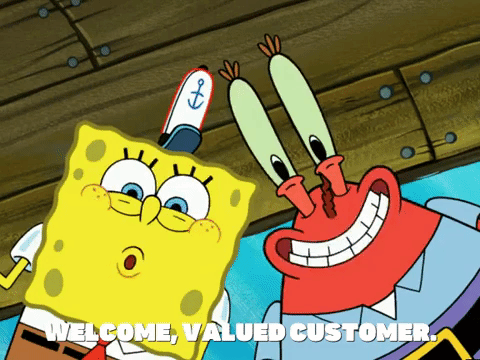- Simple Profits
- Posts
- Issue #192: Unlocking Business Valuation
Issue #192: Unlocking Business Valuation
The Power of Customer Lifetime Value (CLV)
Welcome back to the 55,000 investopreneurs joining us for today’s issue 🥳
Unlocking Business Valuation: The Power of Customer Lifetime Value (CLV)

In the vast, intricate world of business, understanding your company's valuation is key. This number isn't just about bragging rights or securing your next investment. It’s a testament to the health, future potential, and longevity of your business. But how can you significantly influence this number? Enter the Customer Lifetime Value, often abbreviated as CLV or LTV (Lifetime Value).
What is Customer Lifetime Value (CLV)?
Simply put, CLV represents the total worth of a customer to a business over the entirety of their relationship. It's a measure that forecasts how much revenue a specific customer will bring to your business over the course of their lifetime. A higher CLV suggests a higher return on investment for your customer acquisition efforts.
Why is CLV Crucial for Business Valuation?
Predictive Insights for Growth:
With CLV, businesses can predict future revenue and growth. If you know the potential long-term revenue from a customer, you can set budgets, including how much you're willing to spend to acquire them.Focus on Customer Retention:
A high CLV emphasizes the importance of retaining customers. Studies have shown that it’s more cost-effective to retain existing customers than acquire new ones. By optimizing for CLV, businesses naturally optimize for retention.Enhanced Marketing Strategy:
Knowing the CLV helps in segmenting the customer base. You can tailor marketing strategies, loyalty programs, and promotional offers to specific segments, ensuring higher returns.Informed Decision-making:
When a business knows its CLV, it can make more informed decisions about product development, pricing, and sales strategies. It provides a clearer understanding of how different customer segments contribute to revenue.
How Can You Optimize CLV for Better Valuation?
Boost the Average Purchase Value (APV):
Encourage customers to spend more every time they make a purchase. This can be achieved through upselling, cross-selling, and bundling products or services.Increase the Average Purchase Frequency Rate (APFR):
Convert your one-time customers into repeat customers. Implement loyalty programs, offer exclusive deals, or run frequent promotions.Extend the Average Customer Lifespan (ACL):
The longer a customer continues purchasing from your business, the higher their CLV. Focus on customer satisfaction, provide exceptional support, and ensure your product or service continues to meet (and exceed) their needs.
Wrapping Up
CLV isn't just another business metric; it's a philosophy. By centering your business practices around increasing the value and satisfaction of each customer, you inherently drive up the valuation of your business. Investors and potential buyers look favorably upon businesses that demonstrate an understanding of and capability to grow their CLV, seeing them as forward-thinking and strategically sound.
Incorporating CLV into your business framework requires time and effort. To guide you in this transformative journey, we've crafted a specialized worksheet that breaks down the process into manageable steps, ensuring that you have a concrete action plan to elevate your CLV and, in turn, your business valuation.
So, as you delve into the intricacies of business valuation, remember: each customer holds a universe of potential. It’s up to you to tap into it.
Worksheet: Evaluating & Enhancing Customer Lifetime Value for Business Valuation

Purpose of this Worksheet:
To guide business owners and entrepreneurs in understanding the significance of Customer Lifetime Value (CLV) in their business's valuation and to provide actionable steps to optimize it.
1. Basic CLV Calculation:
Begin by calculating your current Customer Lifetime Value.
Average Purchase Value (APV): How much does a typical customer spend in one transaction?
$[________________________________]Average Purchase Frequency Rate (APFR): How often does a typical customer make a purchase within a year?
[__________________] times/yearAverage Customer Lifespan (ACL): How many years does a typical customer continue purchasing from your business?
[__________________] years
CLV = APV x APFR x ACL
$[________________________________]
2. Current Business Valuation:
To understand the impact of CLV on valuation, note down your current business valuation.
$[________________________________]
3. Impact Analysis:
Estimate the potential growth in CLV by improving specific metrics and its impact on business valuation.
Projected increase in APV (e.g., 10%):
$[________________________________]Projected increase in APFR (e.g., by 2 times/year):
[__________________] times/yearProjected increase in ACL (e.g., by 1 year):
[__________________] years
New CLV = Projected APV x Projected APFR x Projected ACL
$[________________________________]
4. Strategies for CLV Optimization:
List down strategies that can enhance each metric:
Strategies to Increase APV:
[________________________________________________________________________]
[________________________________________________________________________]
[________________________________________________________________________]
Strategies to Increase APFR:
[________________________________________________________________________]
[________________________________________________________________________]
[________________________________________________________________________]
Strategies to Increase ACL:
[________________________________________________________________________]
[________________________________________________________________________]
[________________________________________________________________________]
5. Action Plan:
For each strategy listed above, note down the specific actions required and a timeline.
Strategy DescriptionAction StepsDeadline[e.g., Introduce loyalty program]1. Research loyalty program platforms.DD/MM/YY2. Design tiered reward system.DD/MM/YY3. Launch with a promotional offer.DD/MM/YY.........
6. Regular Review:
Set a schedule to periodically review and recalibrate CLV metrics and strategies.
Next CLV Review Date:
[//____]Metrics to Assess:
APV [__________________]
APFR [__________________]
ACL [__________________]
Conclusion:
Optimizing CLV is a continuous process. By understanding its role in business valuation and consistently working on improving it, businesses can increase their worth and attractiveness to investors.
Partner Promotion 🤩
In case you missed it, we’ve partnered with EpicInboxes.com to help 10 of our readers grow + monetize their newsletter.
100% free services.
If you invest $2.5k+ mo in marketing, then EpicInboxes will take over your newsletter growth 100% free, and help you monetize with paid sponsorships and automated sales funnels.
Simply submit the form below…
|
